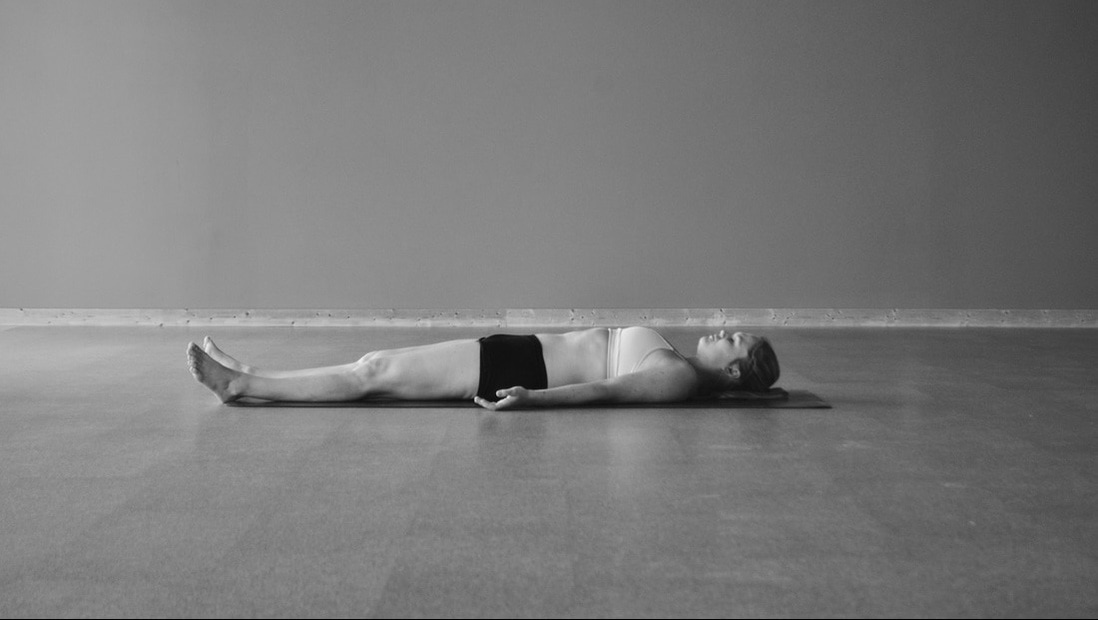|
Shavasana (Corpse Pose) is fundamental to modern yoga and has been essential for several hundred years. But it did not start as an asana, and its earliest iteration wasn't even technically part of hathayoga.
The earliest instruction describes this practice as part of layayoga or the "Yoga of Dissolution," in which we strive toward "dissolution of the mind." At this point in history (12th century) the techniques of layayoga are separate from hathayoga and include meditating on emptiness, staring at the tip of the nose and staring between the eyebrows. You may recognize some of these techniques from modern yoga, especially the focused gaze which is now commonly referred to as drishti. Another technique of layayoga is as follows: "Lying supine on the ground like a corpse is said to be an excellent dissolution. If one practices in a place free from people while relaxed, one will achieve success." (1) You will recognize this as the practice that is later appropriated into hathayoga and called Shavasana. A few hundred years later hathayoga has become a larger system, full of outside techniques including some from layayoga. By the time the Hatha Pradipika is published, the practice of lying on the ground and stilling the mind is labeled as an asana: "Laying down on the ground, like a corpse, is called Śava-āsana. It removes fatigue and gives rest to the mind." (2) The practice technique is similar to the earlier method from layayoga, with new emphasis on physical elements like fatigue and slightly less emphasis on dissolving the mind. As modern culture has become more hectic and stressful, the elements of relaxation have become central to the practice of Shavasana. A NOTE ON PRONUNCIATION The Sanskrit spelling of this word is śavāsana. The letter ś with the accent mark above is pronounced like "sh." So the truest way to pronounce this word is shavasana (shuh-VAH-suh-nuh). Often the word is written in english as savasana or even śavāsana, and it is easy to mispronounce the first letter as the letter "s." 1. Dattatreya's Discourse on Yoga, trans. James Mallinson, 2013, verse 24-25. 2. Hatha Yoga Pradipika, Chapter 1, verse 34.
0 Comments
Leave a Reply. |
AUTHORSScott & Ida are Yoga Acharyas (Masters of Yoga). They are scholars as well as practitioners of yogic postures, breath control and meditation. They are the head teachers of Ghosh Yoga.
POPULAR- The 113 Postures of Ghosh Yoga
- Make the Hamstrings Strong, Not Long - Understanding Chair Posture - Lock the Knee History - It Doesn't Matter If Your Head Is On Your Knee - Bow Pose (Dhanurasana) - 5 Reasons To Backbend - Origins of Standing Bow - The Traditional Yoga In Bikram's Class - What About the Women?! - Through Bishnu's Eyes - Why Teaching Is Not a Personal Practice Categories
All
Archives
May 2024
|







 RSS Feed
RSS Feed